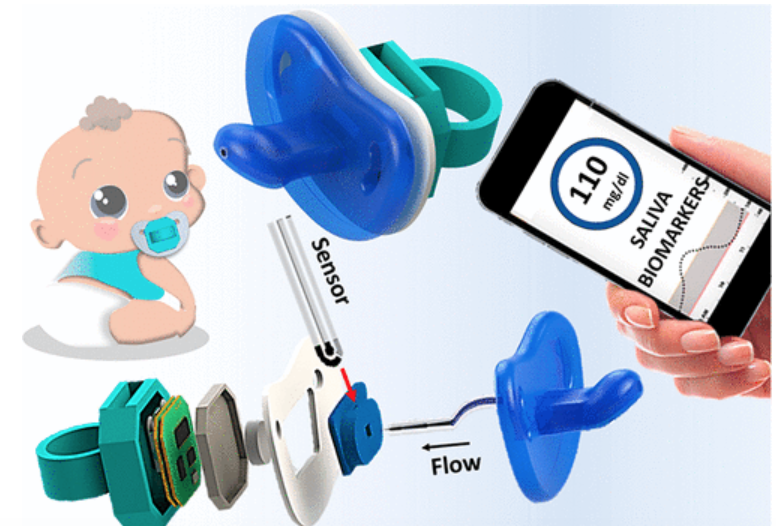UCSD’s Joe Wang has developed a soft, flexible, pacifier-based biosensor that continuously monitors glucose levels in saliva to detect diabetes in babies. Until now, continuous glucose monitoring in newborns, available only in major hospitals, requires piercing the infant’s skin to reach interstitial fluid.
The team created a proof of concept pacifier where small amounts of saliva were transferred through a narrow channel to a detection chamber. An enzyme attached to an electrode strip converted glucose in the fluid to a weak electrical signal, which could be detected wirelessly by an app. The strength of the current correlated with the amount of glucose in saliva samples.
The preliminary analysis was conducted on adults with type 1 diabetes. The pacifier detected changes in glucose concentrations in saliva before and after a meal.
The device could also be configured to monitor other disease biomarkers.
Joe Wang will be a keynote speaker at ApplySci’s 12th Wearable Tech + Digital Health + Neurotech Boston conference on November 14, 2019 at Harvard Medical School.
Other speakers include: Brad Ringeisen, DARPA – Carlos Pena, FDA – George Church, Harvard – Diane Chan, MIT – Giovanni Traverso, Harvard | Brigham & Womens – Anupam Goel, UnitedHealthcare – Nathan Intrator, Tel Aviv University | Neurosteer – Arto Nurmikko, Brown – Constance Lehman, Harvard | MGH – Mikael Eliasson, Roche – Nicola Neretti, Brown – R. Jacob Vogelstein, Camden Partners – Yael Mandelblat-Cerf, Biogen
